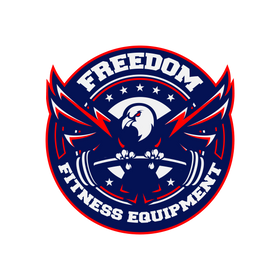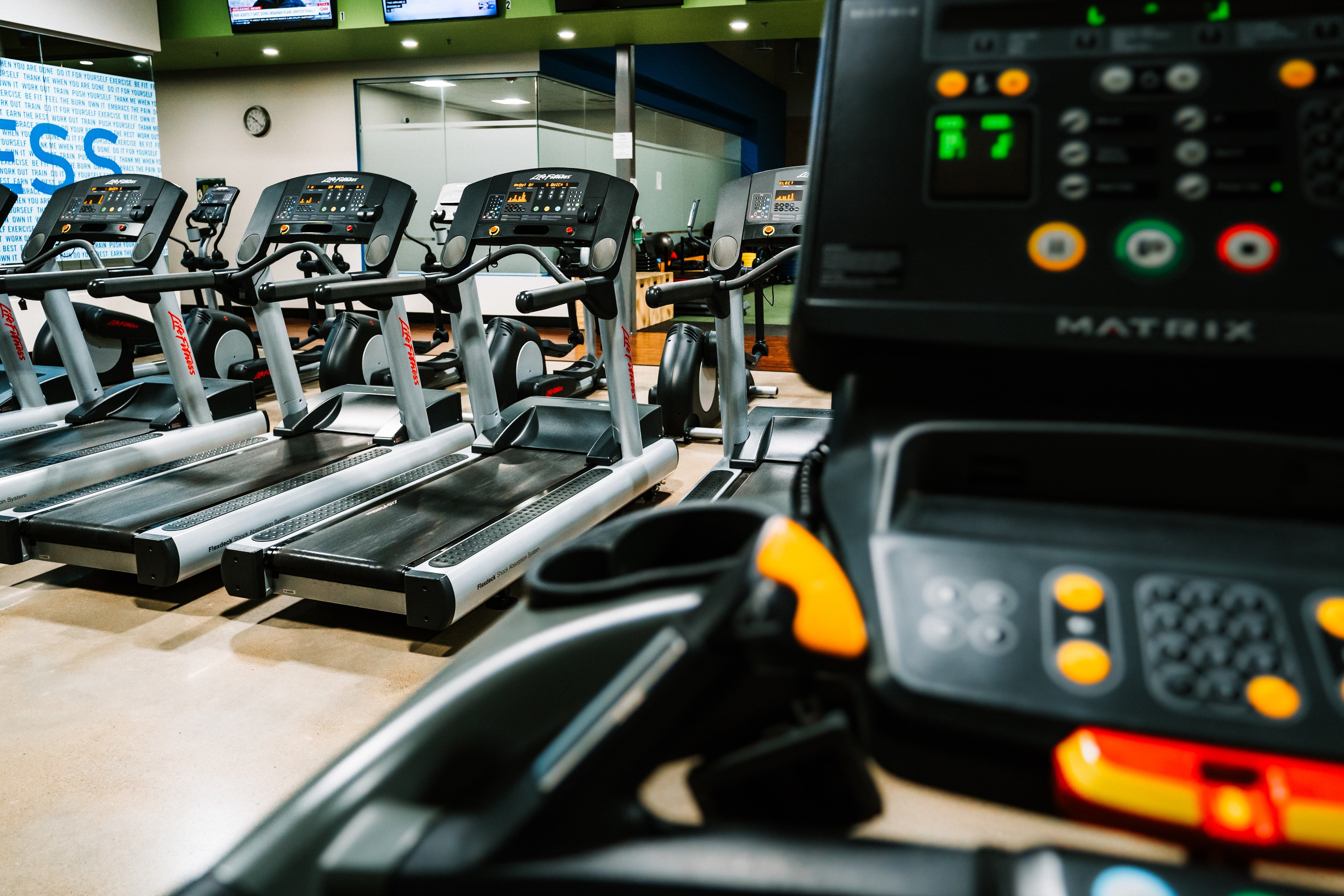Chances are, if you’ve ever made a weight loss, get fit, or healthy-living New Year’s Resolution it involved a treadmill or elliptical. For some reason, treadmills and ellipticals are as ingrained into gyms as any piece of equipment.
Just think of the latest Planet Fitness commercial you’ve seen - rows and rows of treadmills and ellipticals. Or consider, what are the two most common pieces of equipment most people navigate to at your gym. Well, besides the bench press on Mondays of course.
Both treadmills and ellipticals are widely popular and for different reasons. Let's look first at the treadmill. Later on, we will talk more about ellipticals.
The popularity of treadmills can be associated with a many number of factors.
The way I see it - there are two. First, we have associated weight loss with running. After all, why do most people go to the gym? Either to lose weight, gain muscle, or some combination of the two. Running and losing weight have become synonymous and not necessarily for bad reasons.
I think this partly connects with the second factor in that running is very common. I think people feel comfortable using a treadmill because unlike a rower or a barbell squat, they’ve walked, jogged, and run before, even if it has been a while. So people of all fitness levels feel at least somewhat comfortable on a treadmill.
Running is somewhat intuitive to us as humans.
I think that’s part of the reason treadmills are popular and stick with us.
Anyways, now that we are back from the philosophical world, let’s look at some of the practical benefits of running on a treadmill.
Benefits of Running on a Commercial Treadmill

The benefits of running on a commercial treadmill are very similar to the benefits of running, so let’s just talk about running as a whole.
Running is not only good for your physical health but also your mental health. Here are a couple of the many benefits of running:
-
Increased Longevity
Everybody wants to live longer right?! Well, instead of freezing your cells or trying to be Marty McFly and time travel, you can just run. According to a study of 55,000 people, researchers at Iowa State found that running three times a week for an average of 17 minutes a day reduced the risk of stroke or fatal heart attack by 55%.
Running can also help you prevent (not cure) cancer. At the end of the day, exercise is great for your health.
We all instinctively know this. Especially when we’ve overeaten during the holidays - which is probably why running is one of the most common New Year’s resolutions. So whether you buy a commercial treadmill and run or not, make sure to get some exercise in. Your future self will thank you.
-
Stress Reliever
If you’ve ever been for a run, you probably know this to be true. There is something about exercise that makes you feel better - especially if you reach that elusive "runner's high." Whether it is the endorphin release or just getting your blood flowing, you almost always leave feeling less stressed and proud of your effort.
Not to mention, running, whether on a commercial treadmill or outside, is a great way to get some time to yourself in our busy world. Whether you are inside binging some Netflix or outside listening to your favorite music or podcast, that time can be good for your mind and body.
Residential vs. Commercial Treadmill
For the most part, most pieces of gym equipment are designed for one of two customers in mind - home gyms or commercial gyms.
Commercial treadmills tend to be bigger, pricier, and heavier.
They also tend to be pretty durable, which is super important - a durable commercial treadmill is a staple for any commercial gym. These are the treadmills you see at Gold's Gym or O2 Fitness.
Which of course makes sense, right?! When you think about it what do commercial gyms have more of typically than home gyms? Space, money, and people.
So, which one is best for you?
Who Should Buy a Commercial Treadmill?
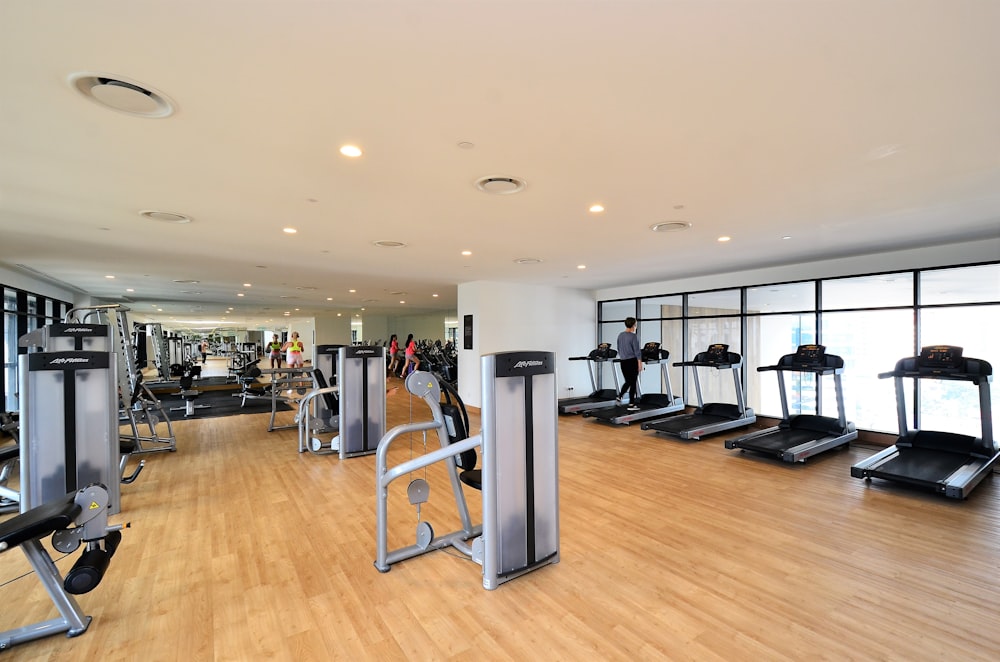
Commercial-grade treadmills are, in large part, for commercial gyms. This isn’t to say you couldn’t purchase one for your home gym, just that it may not be the best option.
If you are an owner or manager of a commercial gym, this is the direction to go.
As mentioned above, these treadmills are designed to handle the wear and tear that your members will put on the machines. If this is you, it is probably a good investment to get the extra durable commercial treadmill. The typical treadmill at a commercial gym is going to see considerably more use over time than your treadmill at home - unless, of course, you and your family are training hard and very often.
There are quite a few options for residential or home gym treadmills that would make more sense for your garage needs. As we always touch on, space is a big deal when it comes to your garage gym. You have limited space for all the essential pieces of equipment you want - from squat racks and dumbbells to kettlebells and barbells.
For this reason, a smaller treadmill will almost always be the best option plus I’m sure you don’t have an unlimited budget so I’m trying to save you a few bucks - put that money towards your weight plate set.
What to Look for in a Commercial Treadmill?

Okay, now that we’ve talked about the differences between commercial and residential treadmills, let’s look at some things to consider when looking to buy the best commercial treadmill for you.
Types of Commercial Treadmills
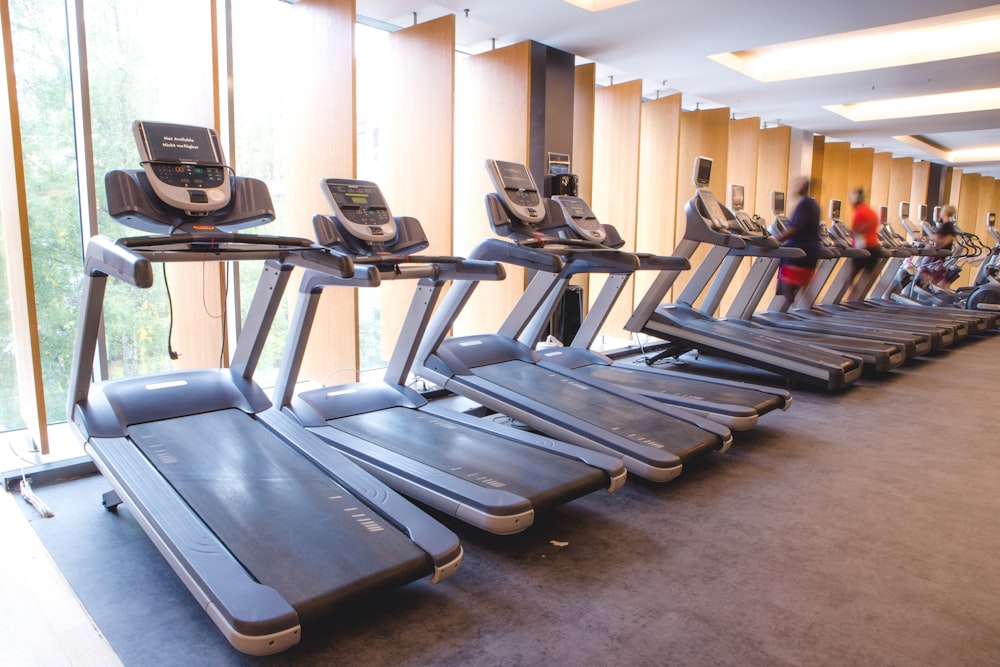
So there are two main types of commercial-grade treadmills.
The first is the one you are probably thinking about. The single-tread commercial treadmill is the one you will find at virtually any gym you ever go to.
This commercial-grade treadmill operates with a motor that moves the tread according to whatever speed settings you adjust it to. The idea with these treadmills is that you pick a pace you want to stay at for a few miles (or a few hundred feet if you are doing interval training) and the tread consistently moves at that speed. You then just have to keep running and not fall off and you will hit your paces.
This does create some safety concerns. What happens if you trip or fall? Luckily, most treadmills have a safety feature that helps prevent this. It’s basically a strap that attaches to you and if you fall the strap alerts the commercial treadmill to stop.
But, as far as having a set speed and pacing it is great for anyone new to running. This is because they don’t have to worry about pacing nearly as much as you would outside, although learning to pace is a valuable skill for any runner.
These commercial treadmills mimic running but aren’t completely the same as running outside. This is because you aren’t really propelling yourself forward as you would outside - you are staying on top of a moving surface which has slightly different implications for your running technique and efficiency. These treadmills also offer differing levels of shock absorption to cushion the blow of your foot on the running deck, a little smoother than running on pavement.
Another plus to these commercial treadmills is their ability to adjust the incline.
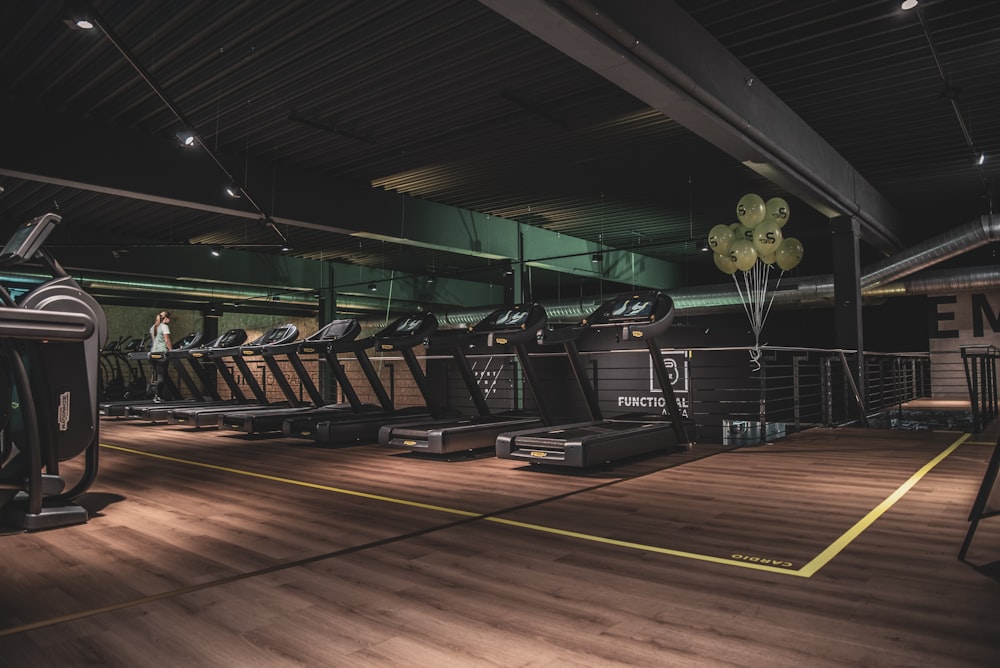
Adding some incline to your running or even walking is a great way to increase the intensity of your workout.
The second type of treadmill has become more common in recent years. The tread on these commercial treadmills is sectioned in slat belts meaning instead of one giant tread there are individual belts connected together - it kind of looks like military tank tracks. These are often called "assault runners" or "curve runners".
The most significant difference between these treadmills and traditional treadmills is that they are typically powered by you the user - so you could consider them a manual commercial treadmill.
This is the exact opposite of traditional commercial treadmills.

This puts all the responsibility for pacing on you as most of these treadmills stop almost instantly if you aren’t actively running on them.
This type of treadmill has a few pros. First, it feels as though it mimics real running more closely. In fact, it may actually be a little bit harder than running outside, whereas running on a traditional treadmill may be slightly easier. Probably the two best manual commercial treadmill models are the TrueForm and AssaultRunner.
What makes it harder is that you have to not only move your body but a machine tread.
It requires more effort from your muscles than running outside does. Another pro is safety. Because the machine is powered by you, you don’t have to worry about it continuing to run if you trip or fall.
Oftentimes, these commercial treadmills can also double as “resistance sleds.”
What I mean by this is that the resistance on the tread can be increased to a level you would not be able to run on. When you turn it up this high, you can use the resistance of the tread and walk almost as if you are pushing a sled. This is great for a lower body pump and also great for your joints - Knees Over Toes anyone?
A potential negative (or positive) depending on how you look at it is that the pace is entirely up to you.
You have to work harder to stay at the pace you want as it is much more active mentally and physically than just turning your mind off and running to stay on a preset pace.
These two commercial treadmills could hardly be more different. It really comes down to which running style you prefer.
Personally, I think the best commercial treadmill is the manual commercial treadmill because of the additional functionality and closer mimic of true running style.
As you are looking for the best durable commercial treadmill, be sure to weigh the pros and cons of each type of treadmill.
Types of Commercial Treadmill Monitors

In a world full of iPads, Elon Musk, and AI - it was only a matter of time before commercial treadmills became “smart.”
Of course, you have your traditional commercial-grade treadmill monitor. Oftentimes it looks like something out of a Star Trek movie. Most commercial treadmills have this monitor.
It typically has flashing lights and buttons to increase the speed and incline of the treadmill.
It also has a monitor display showing things like how many calories you’ve burned, your heart rate, and total distance. The amount of information varies by treadmill but these are some pretty basic features you can expect from your commercial treadmill.
Now there are two other monitors that are pretty common - one is way more high-tech and one is not. Let’s start with the high-tech solution.
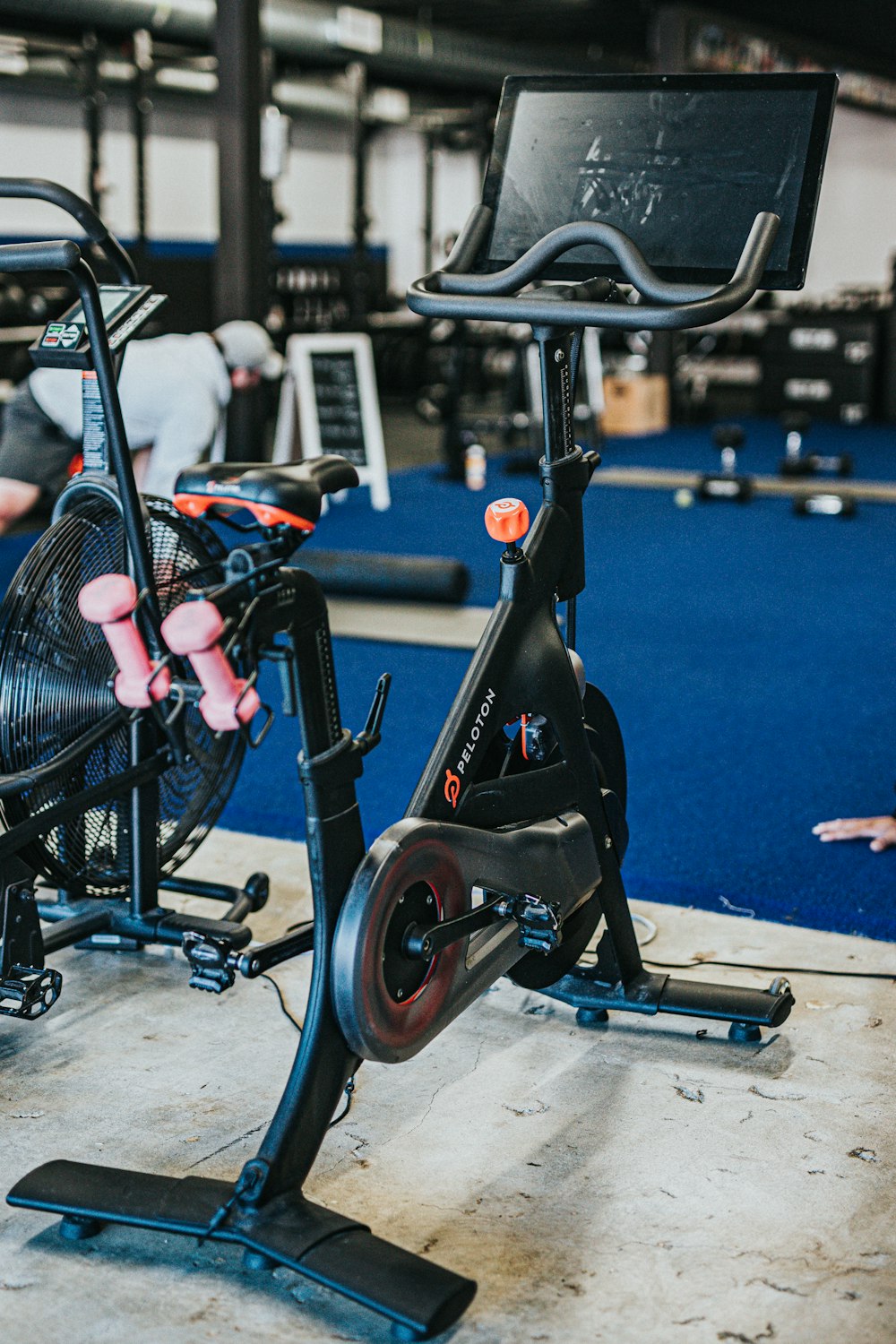
These commercial treadmills are brought to you by Peloton. Now certainly there are other companies that now make these commercial treadmills, but with Peloton’s entry into the market with their smart bike, the future of cardio is here.
The same idea of Peloton’s bike is now being applied to commercial treadmills.
Now if you aren’t familiar with Peloton bikes, they are basically bikes that come with an oversized iPad. This iPad delivers on-demand and live workout classes - primarily cycling classes. It’s a really cool way to bring a class cycling feel to a home gym or even a commercial gym.
So basically, the same idea has come to commercial treadmills. Other versions include treadmill monitors that allow you to feel as if you are running in some exotic location hopefully making your slow trot a little more enjoyable. These smart monitors are almost always found on the traditional commercial treadmills and not the manual ones.
Who knows which commercial machines will be next?
The last type of monitor is found primarily on manual treadmills.
For some reason, these commercial treadmills decided to go with a super minimalist design for their monitors - we are talking a small square box about the size of the largest iPhone. It is simple, typically only displaying speed, distance, and maybe calories and heart rate.
Monitors aren't a huge deal as far as actual running performance, but they can make your run more enjoyable depending on your preference - so be sure to consider the different options as you search for the best commercial treadmill.
Commercial Treadmill Running Surfaces

One of the last biggest differences you will see in commercial treadmills is with the tread.
The first variation is the tread size or a better way to think of it is simply the running surface size.
Because commercial treadmills are bigger, naturally they are going to have a greater running surface size, likely in both length and width.
These are likely going to be the biggest option, so if you have a garage gym and really like the tread space you find at a commercial gym, that could be a good option for you.
On the flip side, there are treadmills that are foldable and storable and probably half the size of commercial treadmills. Now often these are designed for walking, especially when working, but just know that the size can vary significantly.
Finally, you may have seen commercial treadmills that are curved.
Oftentimes these are the same treadmills that have slat belt tread. Obviously, this is much different than the flat commercial treadmills you would more commonly find. The reasoning behind the curve in treadmills goes back to the goal of creating a treadmill that more closely mimics running.
It also just makes sense. If you think about it from a physics standpoint, it would seemingly be much more difficult to run on a self-propelled surface that is flat. You would have a difficult time getting the tread moving as easily and running would be more inefficient.
Plus, it looks pretty cool.
So, that's it for commercial treadmills. Stick around until the end for the rundown on best places to go to buy the treadmill of your dream.
Now, to ellipticals. Let's dive in.
Benefits of Using a Commercial Elliptical

Ellipticals on the surface look very similar to running, both involve the user standing and moving forward in a “running-like” motion.
For this reason, ellipticals give many of the same benefits we talked about earlier with running - things like increased longevity and relieving stress.
However, what makes ellipticals unique is the fixed motion they allow your legs to move on. Unlike running, there is very little variation in form and technique from one user to the next with the elliptical. This can be both a pro and con.
Let’s think about this by comparing it to a machine chest press versus a bench press. With a machine chest press, you are locked into a fixed motion. Some people prefer this for those who are new to lifting weights as it requires less skill. It also can be easier on your joints as the machine ensures you are moving correctly along a fixed plane.
In the same way, the elliptical allows you to get a great cardio workout without any worry about technique or spending a lot of time on your running form.
The elliptical also puts less stress on your joints as there is no impact.
Running requires your feet to strike the ground, alternating between left and right to propel you forward. An elliptical moves in a circular or ellipsis motion - makes sense, why they call it an elliptical right?! This circular motion allows your feet to never actually leave the foot pad. This means there isn’t any pounding on your joints from constant ground contact. This can be a huge benefit for someone looking to come back from an injury. It can also be a great benefit for those who struggle with knee and hip pain and are still looking to get a great workout. Maybe you even decide to run once or twice a week and use the elliptical another day to get extra cardio in without the continual stress on your joints.
The con here is that just like with the bench press versus the machine chest press, you are missing a lot of the benefits of the non-assisted form of exercise. The stability needed and muscle recruitment from performing a bench press versus a machine chest press are quite different. With the bench press, you are in complete control of the weight and have to guide it through the entire rep without assistance. This is a greater challenge for your body for sure.
In the same way, running requires you to support your entire body weight. You are in control. This is something you lose with the elliptical. Being able to control your body in space is beneficial for stability and body control. You can also push yourself much harder when running, whether outside or on a treadmill.
Residential vs. Commercial Elliptical
Okay, now that we’ve looked at some of the benefits of ellipticals, let’s talk differences between residential and commercial ellipticals.
There are a few major differences here.
First, size. Commercial ellipticals tend to be larger than residential ellipticals. This makes sense right? Gyms like Planet Fitness, Lifetime Fitness, and Crunch Fitness have much much more room than your spare bedroom - well most likely, I mean I’ve never seen your spare bedroom. Commercial ellipticals tend to have larger bases which is where the majority of the extra space comes from. While they are certainly bigger, it's not a huge difference. So if space isn’t a huge issue for you in your home or garage gym, don't sweat it.
The second is durability. This is a big reason why commercial ellipticals are larger. They are built to last longer and for good reason. At busy gyms, they could be used for quite a few hours each day, something that probably won’t be (and shouldn’t be) happening with your elliptical. These commercial ellipticals are going to be used considerably more than your personal elliptical.
Finally, price. Since these commercial ellipticals are larger and more durable, they are also more expensive. After all commercial ellipticals are designed for commercial gym - their budget tend to be a little higher than yours probably is with your garage gym.
Who Should Buy a Commercial Elliptical?
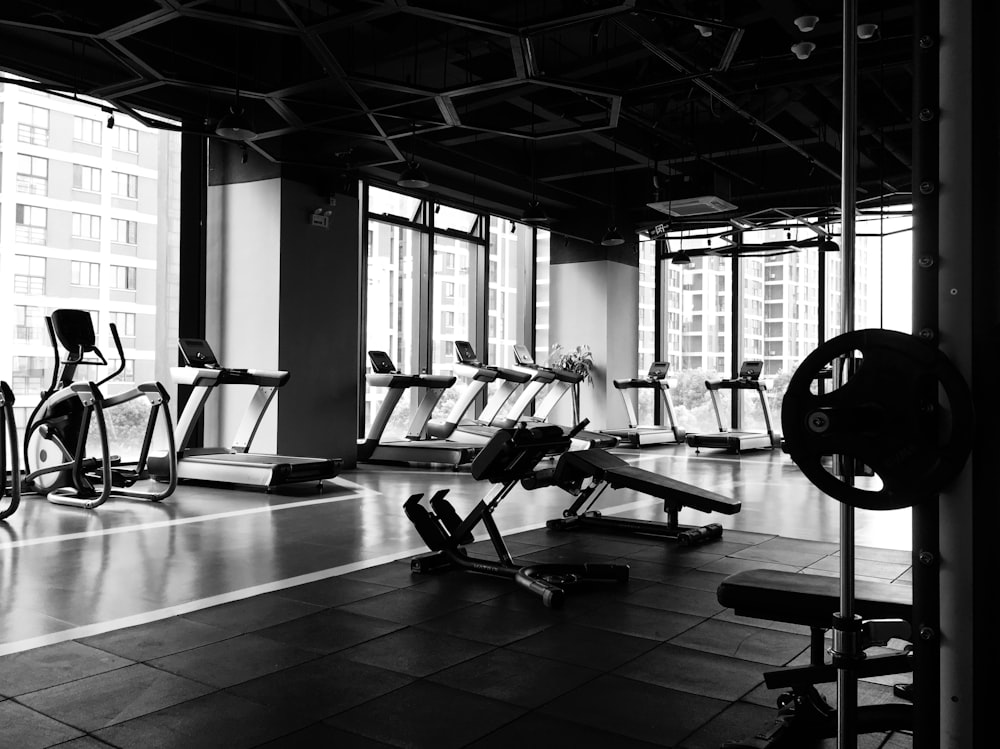
Commercial ellipticals are obviously designed for commercial gyms. However, that doesn’t mean exclusively commercial gyms.
There are a few situations where I think purchasing a commercial elliptical makes sense for a home gym.
Also, if you are a commercial gym owner, it probably goes without saying, but you should buy a commercial elliptical.
Okay, first off, if you are in a situation where you find a great deal on a commercial elliptical - go for it. They will likely last you longer and prove more durable in the long run.
A commercial elliptical could also be for you if you have a large space at your home gym. If you have the room and price isn’t a huge factor, or you find a great deal - again go for it.
Finally, even if you don’t have the most space, but an elliptical is something you plan on using quite often and making a staple in your daily exercise. There’s nothing wrong with getting a little bit bigger, longer lasting elliptical.
What to Look for in a Commercial Elliptical?
Okay, now that we’ve covered some of the benefits and who should be buying commercial ellipticals. Let’s look at some things to consider when you are in the buying process.
FYI - many of these differences also apply to residential ellipticals.
Types of Commercial Ellipticals
There are a few different types and variations of ellipticals.
The first is the one you are probably most familiar with. The traditional elliptical has handlebars, a monitor screen, and two foot pads moving in the shape of an ellipsis. This is a great, all-around elliptical. There are many different brands with different bells and whistles - things like heart rate monitoring and varying resistance levels.
Another type of commercial treadmill is the arc trainer. This elliptical is made by Cybex, and the biggest difference here is the fixed motion path. With the traditional elliptical, it allows the legs to move in a circular motion, constantly going forward. The arc trainer is a little different. The foot pads begin side by side, and in order to begin, you drive one leg forward while pushing the other leg back. It ends up creating a similar feeling as the traditional elliptical, but with more of an emphasis on gliding forward and backward instead of in a forward circle.
If you thought going forward and back was crazy in the world of ellipticals, wait until you hear about this next option. The lateral elliptical. Mind blown right?!
Don’t worry it’s not that complicated, but just like the name implies, the fixed motion path on this elliptical goes side to side.
This creates a different type of muscle stimulus. Anytime we go lateral, we begin to work your adductors and glutes a little bit differently. This is something you probably aren’t doing a lot of in your exercise program. In fact, most people aren’t. Think about it how often do you do lateral lunges or band walks? Now, you aren’t going to build much muscle on an elliptical, but this is certainly a unique machine that can give you some more lateral movement in a world full of frontal plane movement. Other than the fixed motion path, this machine is very similar to other ellipticals.
Lastly, we have kind of a combination elliptical. I think this may be one of my favorite options, simply for its versatility. Versatility is huge, as I’m sure you know when it comes to home gyms. With limited space, making the most of the space you do have is critical. While there are many variations, the “combination elliptical” typically combines a standard elliptical with a stair climber. Talk about a tough cardio machine. Stairclimbers can push you farther than you may want to go but are great for your cardiovascular health, not to mention just functional life skills. If you continually work out on a stairclimber, it is going to be significantly easier to continue to climb stairs and stay active as you age. But anyway, this machine is great for getting both in one cardio machine.
As you can see there are quite a few options for types of ellipticals. One other major difference we haven’t touched on yet is the types of monitors you will see on ellipticals.
Types of Commercial Elliptical Monitors
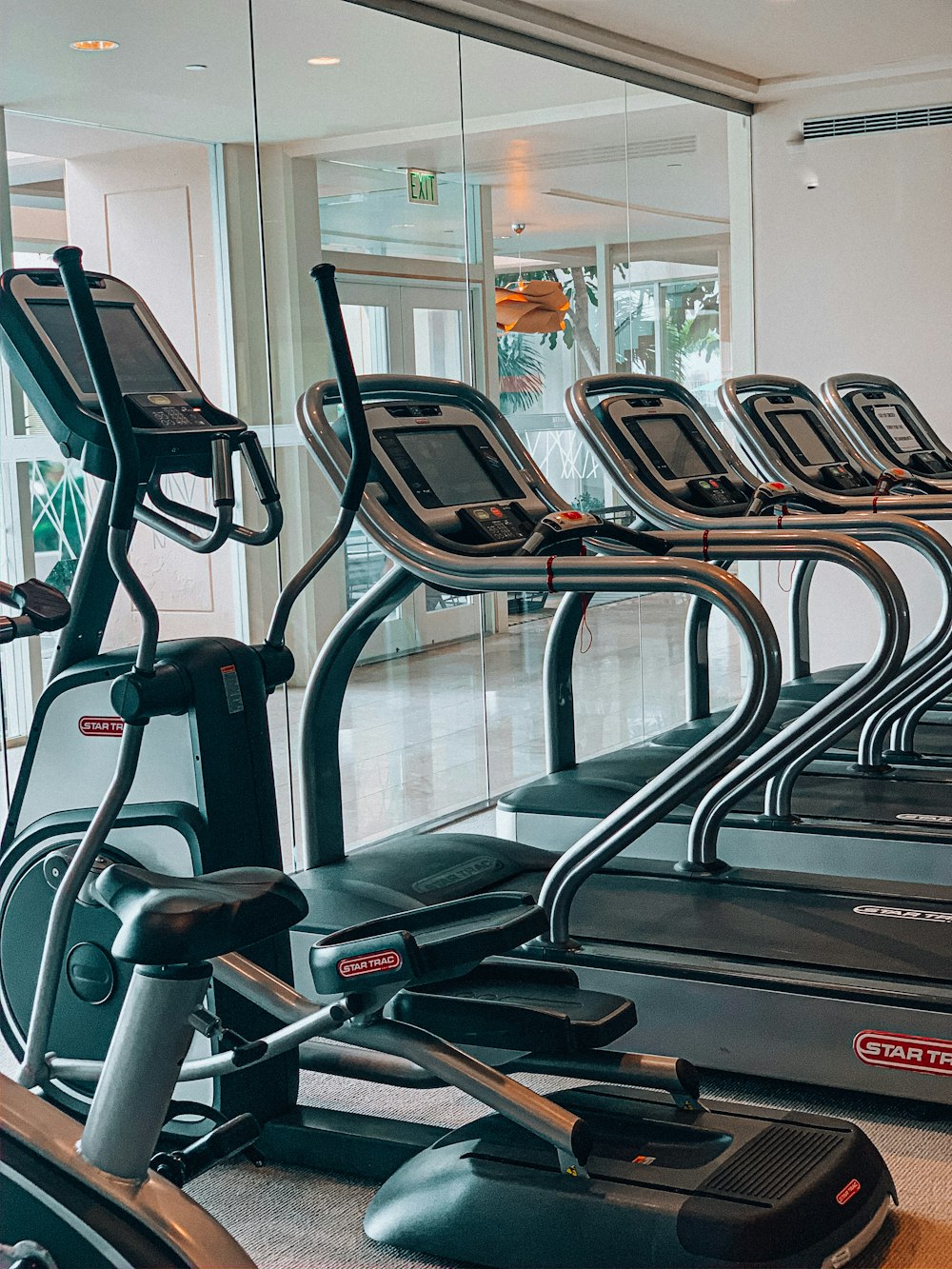
Elliptical monitors can make or break a workout.
Okay, not actually. You make or break your workout. Your effort and showing up consistently are the key to your success and reaching your goals, whether you are working out alone, in a class, or with an online instructor.
Hopefully, that was super motivational.
But anyway, elliptical monitors come in all shapes and sizes. I like to think of it like the televisions of my grandparents.
Okay, hear me out. So I have this one grandma who has an old television, probably just got rid of her antenna, the type of TV you might even need glasses just to see from the couch. I’ve got another grandpa who has got a nice 65-inch flatscreen television. Now it probably has all the bells and whistles you would want (although I’m not sure he knows how or at least chooses to use them all).
I know that might have been a stretch, but ellipticals are very similar. Some machines are stuck in the 80s with a screen that looks like you could set a new Galaga high score on it, while other screens are 24” flat screens with guided live instruction group classes.
So this decision is completely up to your preference. In a world where Peloton has taken the cardio machine world by storm, that may be more of your style. A flatscreen monitor with the ability to workout with others, stream classes, or even just watch TV. If you were able to stay with the analogy earlier, this is my grandpa with the 65-inch flatscreen.
On the other hand, if you just want to move, know how many estimated calories you burned, your time, and speed - you could opt for a less technologically advanced model. Not a bad idea if you want to get away from some screens for 30 minutes or want to save a few bucks.
A really great feature that you will find pretty standard on ellipticals (and treadmills, for that matter) is the heart rate monitor on the handles.
Now, is it 100% accurate, probably not, but it is a good gauge as to what your heart rate is throughout your workout.
Where to Buy a Commercial Treadmill or Elliptical?
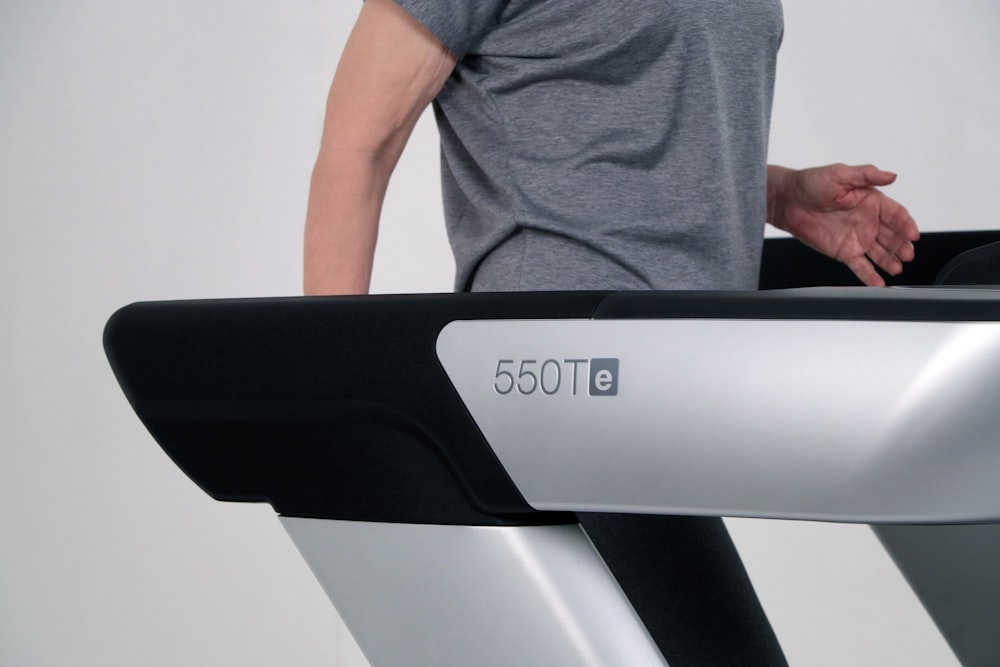
So, now that you know the differences between commercial treadmills and ellipticals, hopefully, you have a pretty good idea of what treadmill or elliptical is best for you and your goals. But, now the question is where to go to buy the best commercial treadmill or elliptical.
Luckily, you’ve got a few options.
-
Google
You’ve got a ton of options online, but you probably already knew that. So let’s look at some options you may not have considered.
-
Facebook Marketplace
Facebook Marketplace is going to be one of your best options here.
With Marketplace, you can find almost anything. This is the blessing and the curse - you never really know what you will find. Fortunately, treadmills and ellipticals are one of, if not the, most common pieces of gym equipment bought and sold. Stay patient and look for the one that fits your needs and what you are looking for. This is a great place to find the best budget commercial treadmill or elliptical for you.
It is going to be much, much easier to find a traditional treadmill than a manual treadmill. This is primarily because there is simply a larger supply of the traditional treadmills. They have been sold longer and at a greater volume, as manual treadmills have only recently become popular.
A nice feature Facebook Marketplace has is the ability to set search notifications to alert you when a new posting has been added that correlates to the keywords you want. So using a search alert of “treadmill” or "elliptical" would be a great idea.
One of the biggest cons of commercial treadmills and ellipticals is simply moving them.
They are heavy, clunky, and large.
Recently, I moved a treadmill with my dad and I think we ended up with two hours lost and one giant scratch on the new hardwood floors. If you are putting it in a garage gym or commercial gym you shouldn’t have a huge problem. For us, it came as we were trying to move it into a bedroom upstairs. Would not recommend.
-
Local Gym
Who has a giant supply of commercial treadmills or ellipticals?
Well, your local gym of course. Especially, if you are looking for a commercial treadmill or elliptical, this can be a great option. Commercial gyms will replace old equipment ever so often and assuming it is still in good condition, this can be a great way to find the best durable commercial treadmill or elliptical for you.
A few things to be aware of here. First, be sure to make sure the treadmill or elliptical is in good shape. Go for a quick run or move on it, and see how it feels; it doesn’t have to be perfect, just make sure you aren’t paying a new price for a budget commercial treadmill or elliptical - the same applies no matter where you buy the treadmill or elliptical.
This really comes down to who you know.
Be sure to ask around at a few of your local gyms. I would especially focus on gyms that may not be national brands. Owners and managers at these local gyms will likely have a greater say-so in what happens with their equipment and whom they want to sell it to.
-
Freedom Fitness Equipment

This is what we do.
We offer both new and used options from many of the best commercial treadmill and elliptical brands. Not only do we have great treadmills and ellipticals, but also a wide variety of cardio equipment and all things strength and fitness equipment. Whether you are looking to fill a commercial gym or your garage gym, we’d love to help you. We are based in Charlotte, NC, and offer both nationwide shipping and local pickup if you are near The Queen City.
Hopefully, you feel more confident in not only how to buy a treadmill or elliptical, but also what the best commercial treadmill or elliptical is for you. Here’s to getting in your cardio and improving your health!
Sources
Dixon, Andy. “10 Amazing Benefits of Running.” Runner’s World, 7 Feb. 2023, www.runnersworld.com/uk/health/a40162605/benefits-of-running/.
